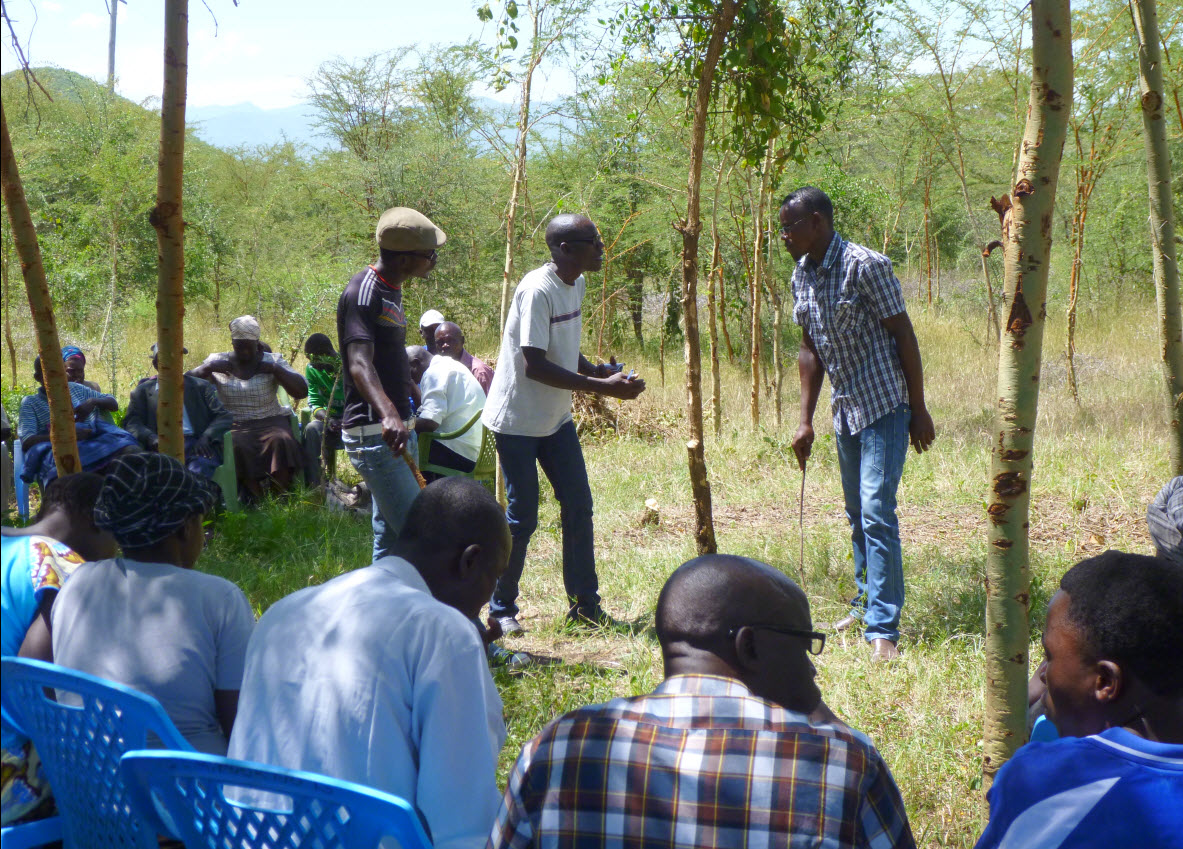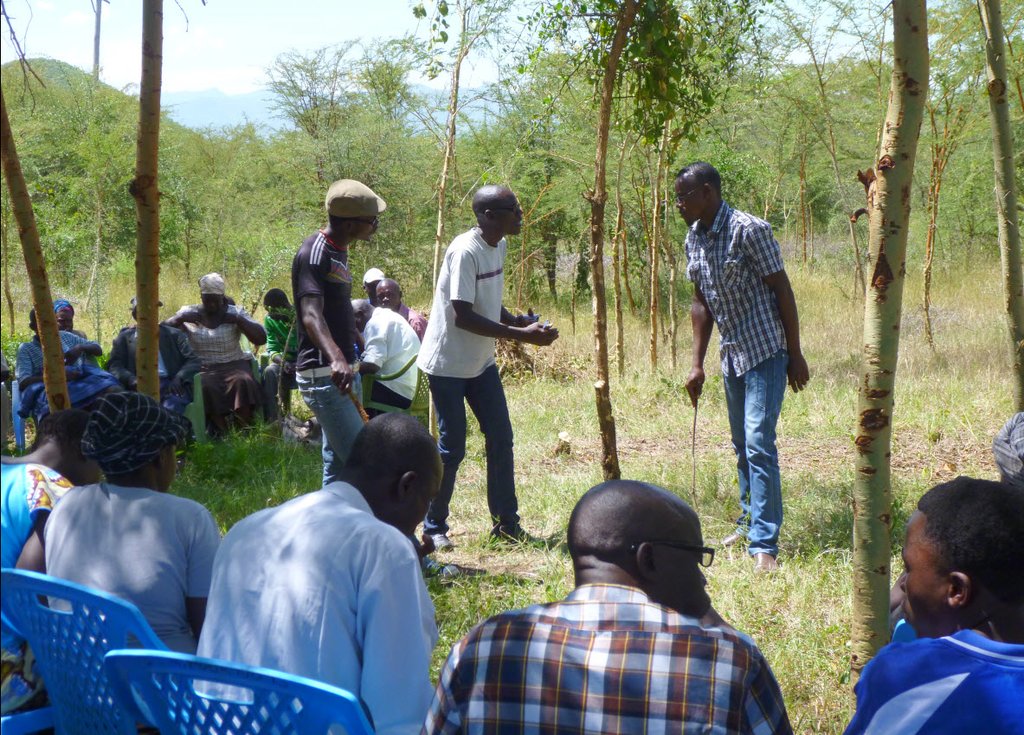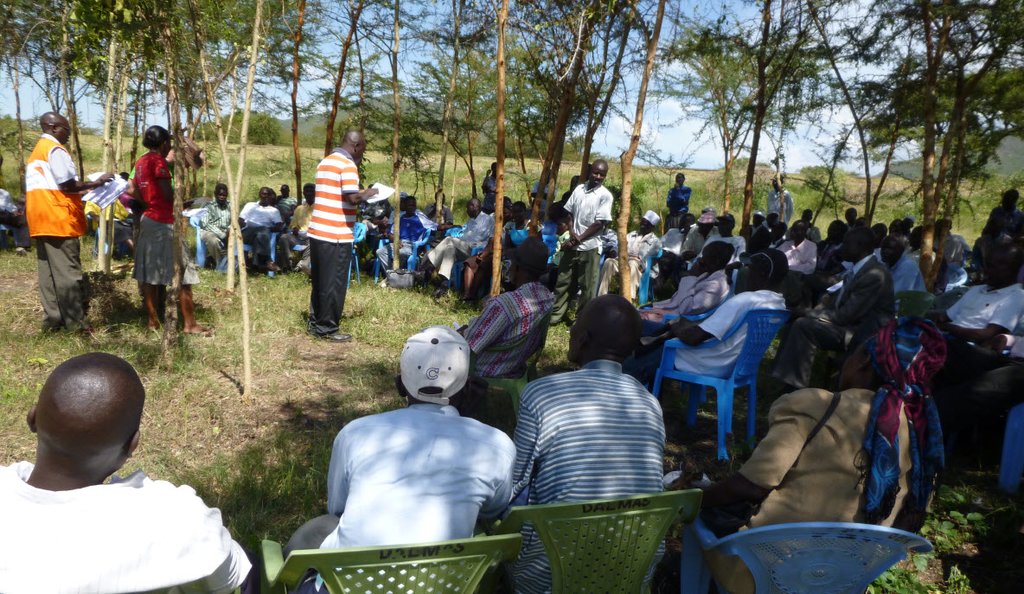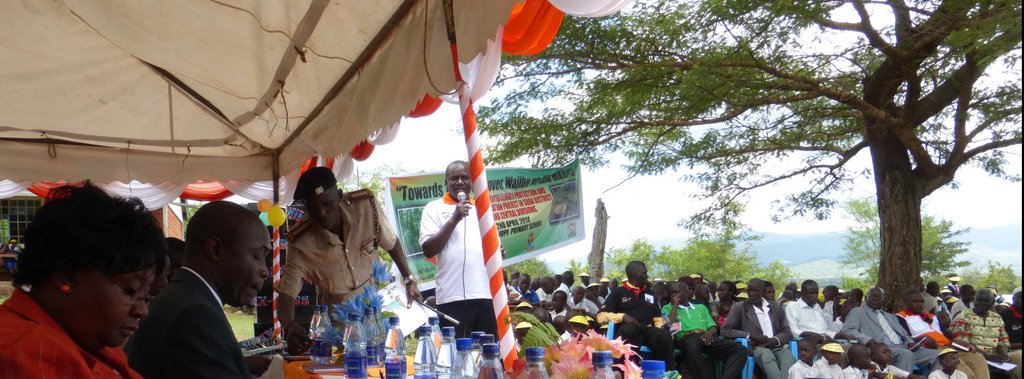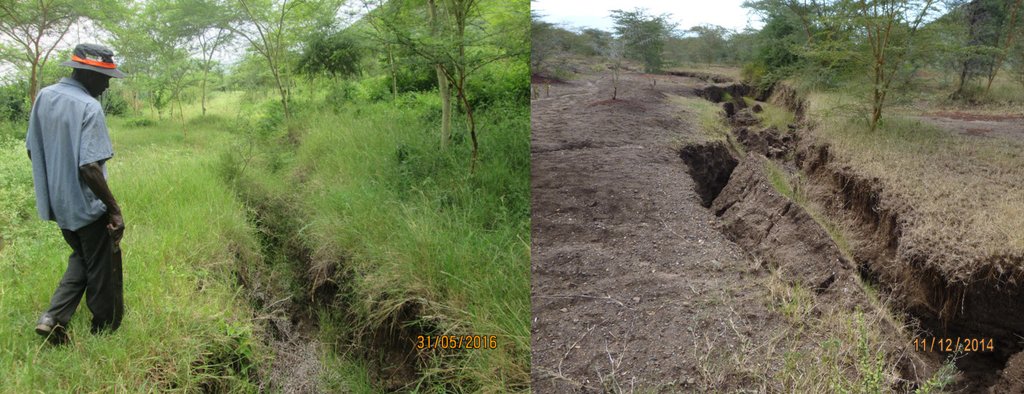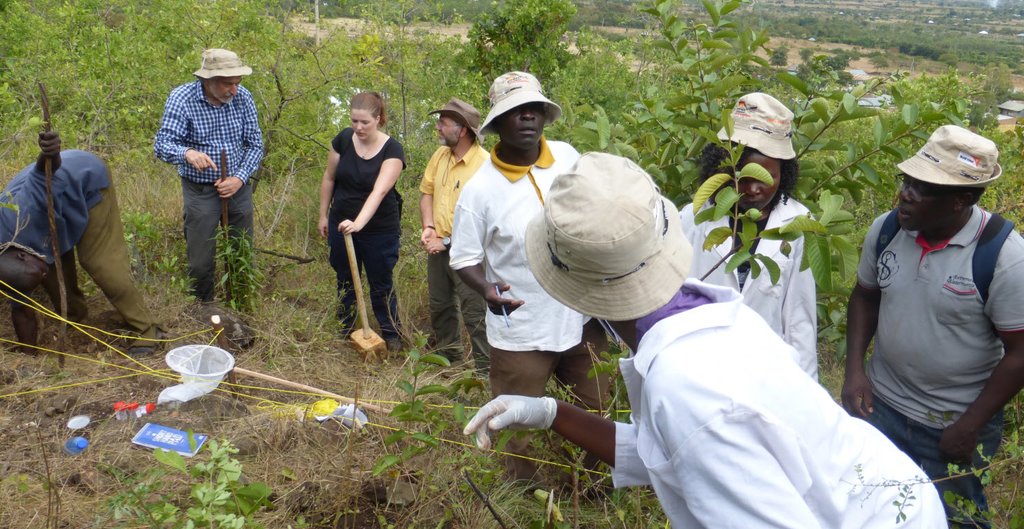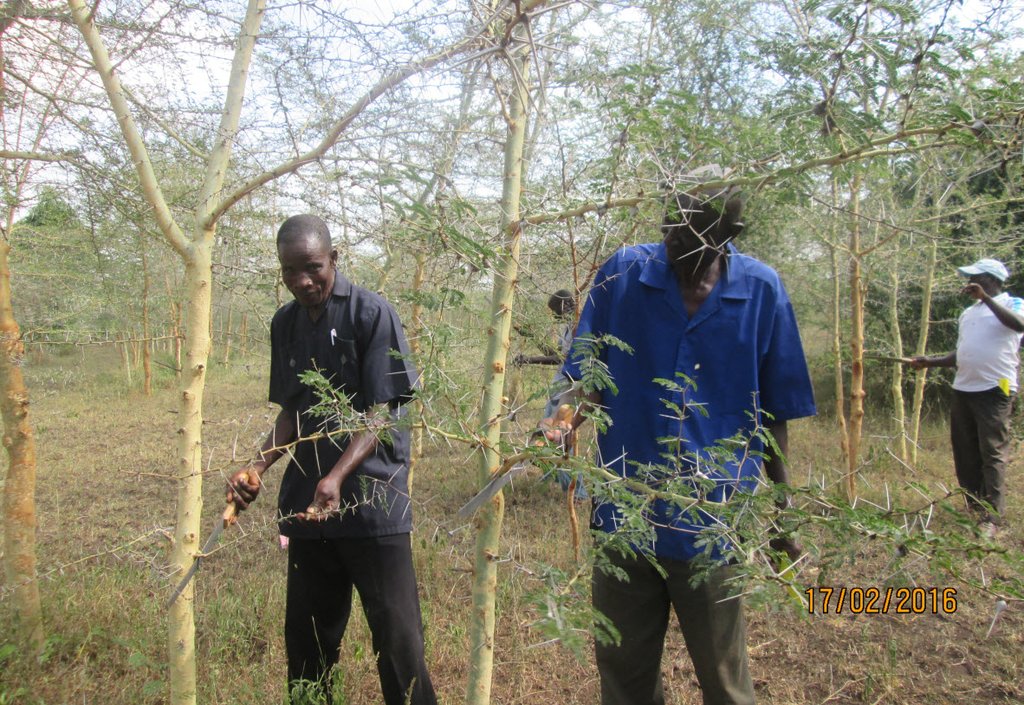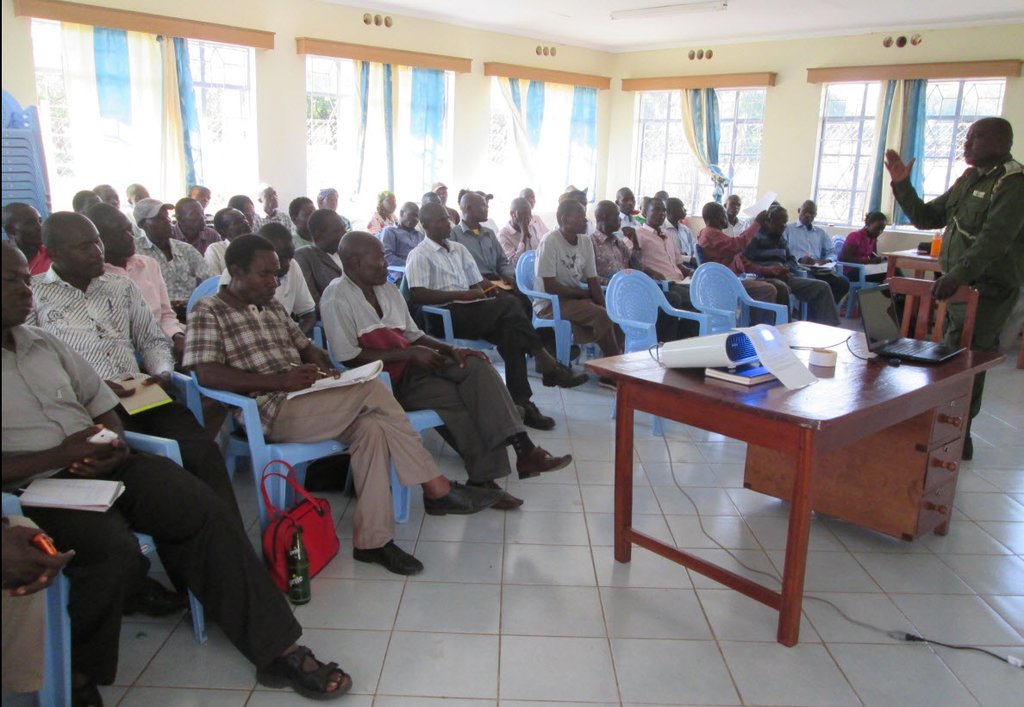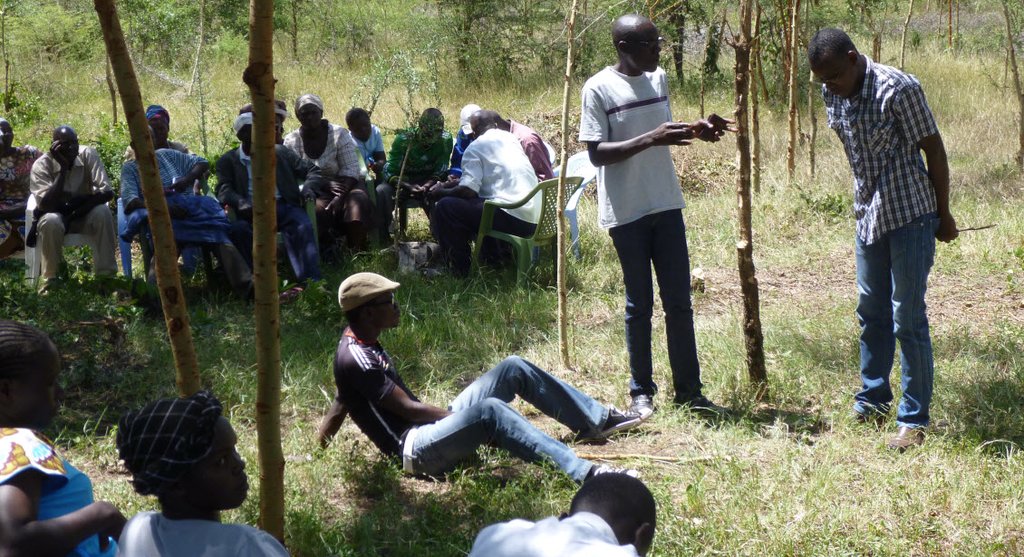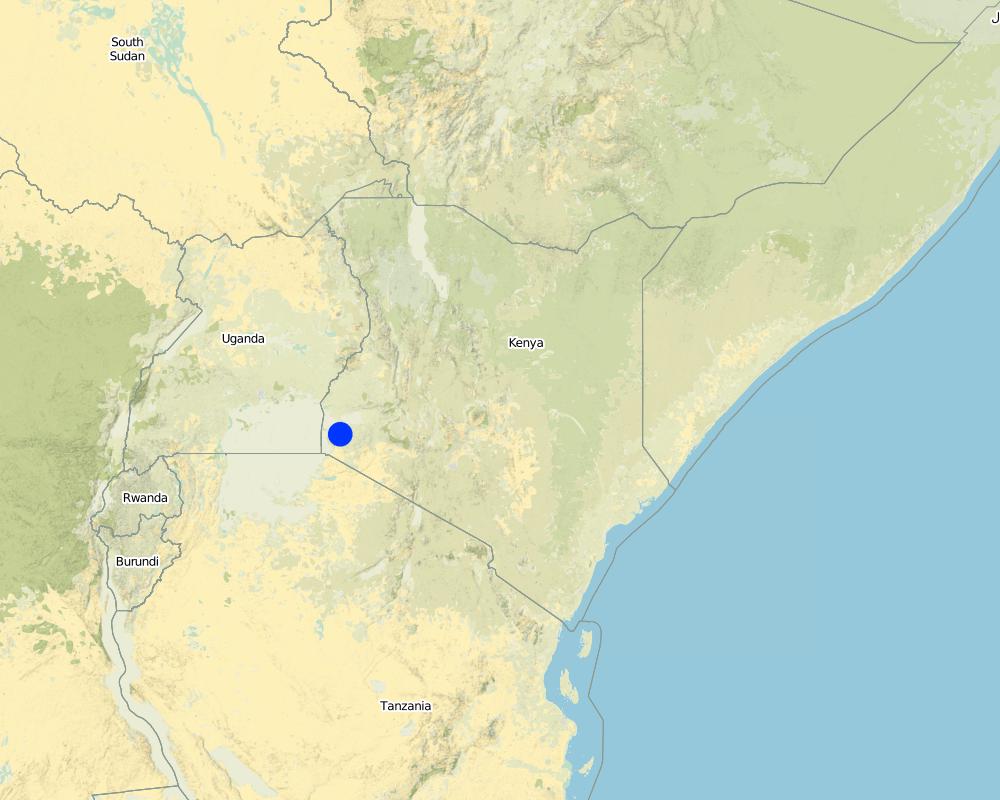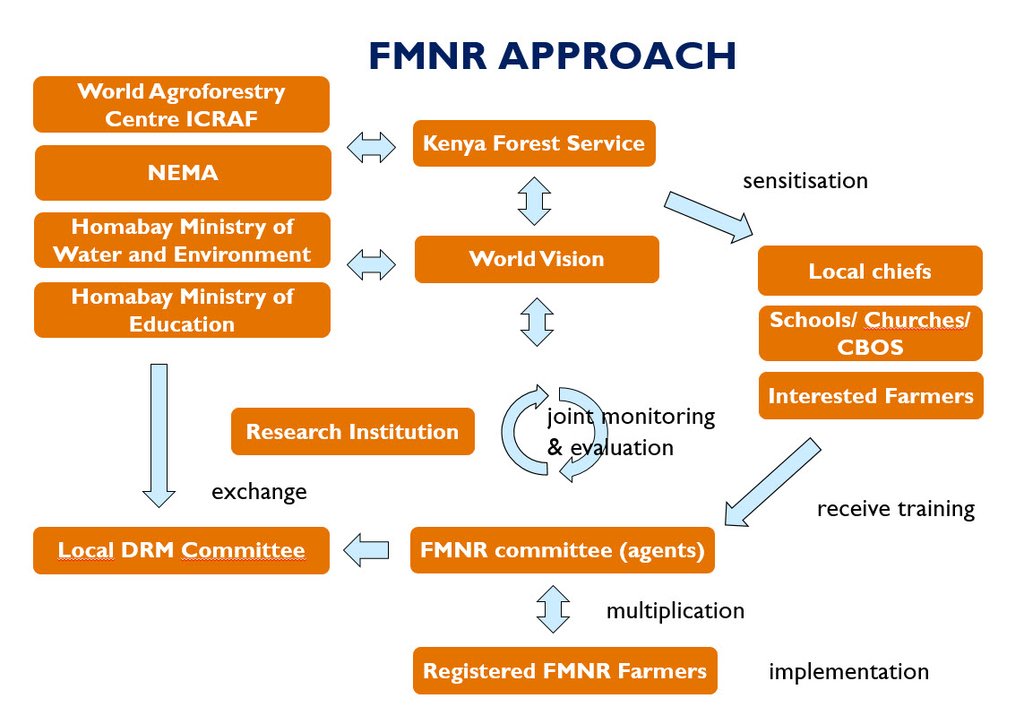FMNR implementation approach [Kenya]
- Creation:
- Update:
- Compiler: Thomas Kalytta
- Editor: Irene Ojuok
- Reviewers: Alexandra Gavilano, Deborah Niggli, Hanspeter Liniger, Donia Mühlematter
FMNR nyale
approaches_733 - Kenya
View sections
Expand all Collapse all1. General information
1.2 Contact details of resource persons and institutions involved in the assessment and documentation of the Approach
Key resource person(s)
SLM specialist:
Ojuok Irene
+254725859689
Irene_Ojuok@wvi.org
World Vision
Lambwe Valley ADP Office, Homabay, Kenya
SLM specialist:
Kalytta Thomas
0041445101593
thomas_kalytta@wvi.org
World Vision
Kriesbachstrasse 30, 8600 Dübendorf, Switzerland
Switzerland
land user:
Sijenyi Onyiego William
0727369635 / 708297048
n/a
Obanda Environmental project Mbita Sub County, Dr Tom Mboya Okeyos Farm along Mbita Homabay Road. The site is by the road side
Name of project which facilitated the documentation/ evaluation of the Approach (if relevant)
Book project: where people and their land are safer - A Compendium of Good Practices in Disaster Risk Reduction (DRR) (where people and their land are safer)Name of the institution(s) which facilitated the documentation/ evaluation of the Approach (if relevant)
World Vision (World Vision) - Switzerland1.3 Conditions regarding the use of data documented through WOCAT
When were the data compiled (in the field)?
28/11/2016
The compiler and key resource person(s) accept the conditions regarding the use of data documented through WOCAT:
Yes
1.4 Reference(s) to Questionnaire(s) on SLM Technologies
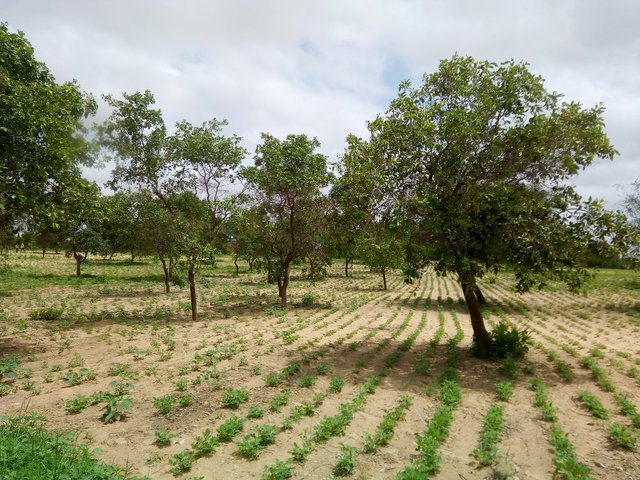
Régénération Naturelle Assistée (RNA) : une alternative pour … [Senegal]
Au Sénégal dans la zone agro-écologique du bassin arachidier, les arbres adultes des parcs sont vieillissants et subissent un émondage excessif et répété entrainant la dégradation des parcs agroforestiers, la baisse de la fertilité des sols et des rendements. De ce constat, la Régénération Naturelle Assistée (RNA) est promue afin …
- Compiler: Diaminatou SANOGO
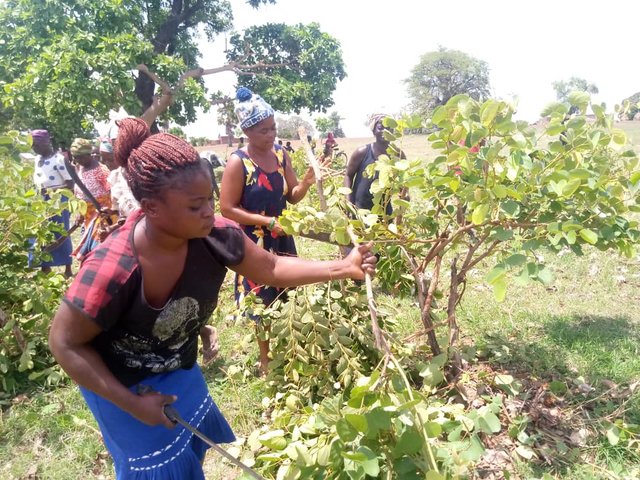
Farmer Managed Natural Regeneration(FMNR) [Ghana]
Farmer Managed Natural Regeneration (FMNR) comprises a set of practices used by farmers to encourage the growth of native trees on agricultural land by systematically allowing regeneration and managing trees and shrubs from tree stumps, roots and seeds.
- Compiler: Joshua Adombire
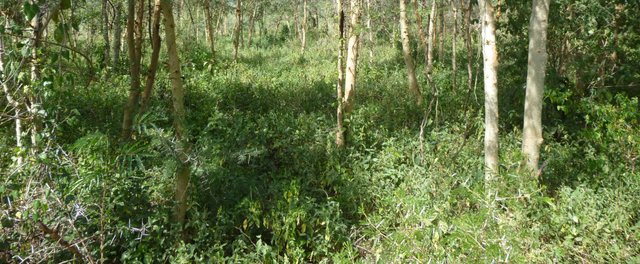
Farmer Managed Natural Regeneration (FMNR) [Kenya]
Farmer Managed Natural Regeneration (FMNR) is a proven SLM Technology to restore degraded wasteland and improve depleted farmland. The farmer regu- lates and facilitates the re-growth of existing trees stumps, or self-sown seeds in the soil, and thus promotes soil fertility and through better ground cover, increases protection from runoff …
- Compiler: Thomas Kalytta
2. Description of the SLM Approach
2.1 Short description of the Approach
After consultations with local stakeholders, experts (from NEMA, ICRAF, KFS, Wildlife Kenya) and Homabay County Government representatives the FMNR approach is being introduced by World Vision through a public funded project. The aim of the approach is to promote FMNR and sustainable land and natural resource management through disseminating the basic idea of regenerating trees.
2.2 Detailed description of the Approach
Detailed description of the Approach:
The approach follows the basic principles of the of Training Trainers ToT (transfer of technology) concept i.e. key stakeholders and agents are trained to pass their knowledge on to others. Through a multi-stakeholder inception workshop all local stakeholders learn about the FMNR technology, its advantages and impacts. Representatives of the county and the national government are invited in order to get their support. Technical experts in agriculture are represented as well.
The Kenya Forest Service (KFS) and World Vision (WV) are the main actors in sensitising the local chiefs, school head teachers, CBOs, self-help groups, farmers' associations and individual farmers about FMNR, Disaster Risk Reduction and other topics. As a result farmers, teachers, schools management committee and CBO members register for the FMNR training, which is also carried out by KFS and WV. Selected farmers (those who are early adopters) are chosen as FMNR agents.
The registered FMNR practitioners (farmers, CBO members, school children, etc.) have to set aside a plot for FMNR application. They implement the technology. Each administrative unit (ward) establishes one FMNR committee under the lead of the local chief. The FMNR committee members (agents) are responsible for further dissemination for training and monitoring of the activities and maintaining the demonstration sites. They also organise exchange visits. They regularly report back to World Vision Development Facilitators. New FMNR farmers register with the committees. Research institutions (e.g. Maseno University) conduct studies to follow-up assumptions and to document change. The Community Disaster Management group is influenced by the FMNR committee and the County administration with regard to erosion control measures and gully restoration.The implementation is jointly monitored by the key stakeholders and documented by World Vision.
2.3 Photos of the Approach
General remarks regarding photos:
Most of the training is done on site which practical demonstrations. 6 fenced demonstration sites and other show cases serve as pilots for the whole community.
2.4 Videos of the Approach
Comments, short description:
A majority of East Africa community relies on agriculture and livestock production as the main source of livelihood yet these sources are experiencing challenges including environmental degradation and climate change. A number of interventions have been promoted at household level. The video teaches about the approach applied in a couple of countries in East Africa.
Date:
09/04/2016
Location:
Kenya, Uganda, Tanzania
Name of videographer:
World Vision
Comments, short description:
Video in German language
Im Kampf gegen die Dürre hat Tony Rinaudo eine simple Methode entwickelt. Anstatt Bäume zu pflanzen, greift er zur Schere und stutzt die Pflanzen, die bereits wachsen. Mit sensationellem Erfolg.
The quality is better on youtube: www.youtube.com/watch?v=tgdcbxE-OQo
Date:
02/09/2016
Location:
Tanzania
Name of videographer:
World Vision
2.5 Country/ region/ locations where the Approach has been applied
Country:
Kenya
Region/ State/ Province:
Hombay County
Further specification of location:
Suba and Mbita Sub-Counties
Comments:
One major demostration site is indicated only, kindly refer to the FMNR technology for more sites.
Map
×2.6 Dates of initiation and termination of the Approach
Indicate year of initiation:
2014
Year of termination (if Approach is no longer applied):
2017
Comments:
The approach of the FMNR technology was introduced by World Vision through a public funded project on climate protection and natural resource management. It received the “Total Kenya Eco Challenge Award” in 2016. The introduction was done through the following steps. The project staff were trained on the concept after which they trained Government staff in forestry, education and agriculture department including chiefs and assistant chief who were to turn out to be the entry point/ ambassadors for the concept. Intense trainings, awareness campaigns, practical demonstrations, consultative meetings and observations were conducted. Till now more than 300 hectares of degraded land was reclaimed through FMNR and over 1000 farmers adopted the practice already.
2.7 Type of Approach
- project/ programme based
2.8 Main aims/ objectives of the Approach
The main objective of the approach is to promote FMNR and other natural resource management practices including agroforestry, crop diversification, sustainable rural energy sources and rehabilitation of highly degraded areas. It is also to utilise environmental education to advise on disaster risk reduction in order to increase the resilience of the target population against adverse effects of climate change and natural disasters.
2.9 Conditions enabling or hindering implementation of the Technology/ Technologies applied under the Approach
social/ cultural/ religious norms and values
- enabling
enabling factors are the medicinal value of trees, herbs, the importance of places for worship and local rituals,
- hindering
livestock and fire put the FMNR sites at risk, fire is sparked on hill tops to attract rain. Some neighbouring farmers also complain about the return of biodiversity especially of monkeys and snakes. Some people still maintain old traditions (clean agriculture) hindering women participating in meetings, from planting trees or working on trees in their homestead. These people are more resistant to new ideas and approaches.
availability/ access to financial resources and services
- enabling
natural materials can be used (wood, fruits, pods and grass) or sold, money for fire wood can be saved
institutional setting
- enabling
some schools have surplus land which is ideal for FMNR and tree planting,
- hindering
sometimes even members of the school management board send their cows for grazing that hampers the FMNR attempts of the school children
collaboration/ coordination of actors
- enabling
most partners are very supportive towards FMNR
legal framework (land tenure, land and water use rights)
- hindering
a clear legal framework is lacking, the ownership of "wasteland" needs to be clear otherwise everybody tries to make benefit out of it (over grazing, charcoal burning)
policies
- enabling
the Kenyan Government has issued a policy that 10% of the land should be covered by forest
land governance (decision-making, implementation and enforcement)
- hindering
young farmers complain that they have not the full rights over the family land, so they can only go for FMNR if the fathers agree. As young farmers who have not yet inherited land from their fathers according to customary laws still don’t own land which they could have long term plans. This hinders them from immediate adoption of FMNR due to land ownership rights. Mostly young men are given their share of land at about 40years. Hence this delays in uptake.
knowledge about SLM, access to technical support
- enabling
the Kenyan Forest Service officers were very supportive
markets (to purchase inputs, sell products) and prices
- enabling
access to local markets are an advantage to sell the farm products e.g. honey is on demand, firewood, crop harvest, inputs are not very much needed apart from standard farming tool and strong gloves
workload, availability of manpower
- hindering
FMNR can create more work but the longer-term benefits are obvious. However, lazy people who are not patient will not appear to training sessions because they might not have understood the benefits of the technology.
3. Participation and roles of stakeholders involved
3.1 Stakeholders involved in the Approach and their roles
- local land users/ local communities
small holder farmers, registered FMNR agents, DRR committees
The stakeholders were sensitised, received training, spread the message to peers and take part of the joint monitoring (agents)
- community-based organizations
CBO and self-help groups, religious leaders (Churches), local NGOs
took part in the training, mobilised their members to adopt the practice, make links to other stakeholders,
- SLM specialists/ agricultural advisers
agricultural extension officers (weak), Kenya Forest Service officers
the KFS officers are involved in the technical training, while the farmers have to go and access the extension officers in the towns to receive their advice
- researchers
Maseno University
measure the tree density, the biodiversity change on the demonstration sites
- teachers/ school children/ students
teachers and school children
practice FMNR and other innovative technologies
- NGO
SEEK, Nature Kenya, Kenya Scouts
teach the children about environment and nature
- private sector
The National Bank in Homabay has been supplying seedlings for tree planting in Homabay County. This was done in collaboration with Kenya Scouts. Now they show also interest in the FMNR technology.
supplied seedlings at the initial stage, show interest in FMNR as well
- local government
local chiefs
mobilise their communities
- national government (planners, decision-makers)
Homabay County Government
very supportive, links to the different departments, provide match funding, take part in the joint monitoring
- international organization
World Vision, ICRAF,
technical advisor, linkage to donors
3.2 Involvement of local land users/ local communities in the different phases of the Approach
| Involvement of local land users/ local communities | Specify who was involved and describe activities | |
|---|---|---|
| initiation/ motivation | passive | local farmers, DRR committee members and local chiefs were invited to take part in sensitisation sessions |
| planning | interactive | local chiefs very active in supporting the new technology by motivation local farmers to become registered |
| implementation | interactive | FMNR committees as technical support, do also monitoring and reporting |
| monitoring/ evaluation | interactive | done by FMNR committees, they receive data from all households jointly with other stakeholders and report back to the project management |
| research | external support | done by students of the Maseno University by gathering primary data from demonstration sites very 6 months and compiling a biodiversity report |
3.3 Flow chart (if available)
Description:
1) Through a multi-stakeholder inception workshop all local stakeholders learn about the FMNR technology, its advantages and impacts.
Representatives of the county and the national government (chiefs) are invited to get their support. Technical experts are represented as well.
2) The Kenya Forest Service and World Vision are the main actors in SENSITISING the local chiefs, school head teachers, CBOs, Self-help Groups, farmer's associations and farmers on the FMNR technology, Disaster Risk Reduction and other topics.
3) As a result farmers, teachers, schools management committee and CBO members register for the FMNR TRAINING, also carried out be KFS and WV.
Selected farmers (early adopters) are chosen as FMNR agents.
4) The registered FMNR practitioners (farmers, CBO members, school children, etc.) have to set aside a plot for FMNR application. They IMPLEMENT the technology.
5) Each administrative unit (ward) establishes one FMNR committee under the lead of the local chief
6) The FMNR committee members (agents) are responsible for further dissemination of the technology, for training and monitoring of the activities and maintaining the demonstration sites. They also organised exchange visits. They report back to World Vision Development Facilitators.
7) New FMNR farmers register with the committees (MULTIPICATION).
8) Research institutions (Maseno University) conduct studies to follow-up assumptions and to document change.
9) The Community Disaster Management group is influenced by the FMNR committee and the County administration in regard to erosion control measures and gully restoration.
10) The implementation is JOINTLY MONITORED by the key stakeholders and documented by World Vision.
11) The Chief officers of the County Government conducts additional monitoring visits.
Author:
Thomas Kalytta
3.4 Decision-making on the selection of SLM Technology/ Technologies
Specify who decided on the selection of the Technology/ Technologies to be implemented:
- all relevant actors, as part of a participatory approach
Explain:
The technology is transferred by World Vision from other African contexts. Each land-user is encouraged to try it on a piece of land. Each farmer decides whether he/she adopts it or wait and see how it develops in the neighbourhood. Demonstration plots help show case the impact and power of natural regeneration.
Specify on what basis decisions were made:
- evaluation of well-documented SLM knowledge (evidence-based decision-making)
- research findings
4. Technical support, capacity building, and knowledge management
4.1 Capacity building/ training
Was training provided to land users/ other stakeholders?
Yes
Specify who was trained:
- land users
- field staff/ advisers
If relevant, specify gender, age, status, ethnicity, etc.
there are participants list available but no time to analyse them
Form of training:
- farmer-to-farmer
- demonstration areas
- public meetings
Subjects covered:
FMNR, Natural Resource Management, Disaster Risk Reduction, Conservation Agriculture etc.
4.2 Advisory service
Do land users have access to an advisory service?
Yes
Specify whether advisory service is provided:
- on land users' fields
Describe/ comments:
Done by the FMNR committees and development facilitators from KFS and WV.
4.3 Institution strengthening (organizational development)
Have institutions been established or strengthened through the Approach?
- yes, greatly
Specify the level(s) at which institutions have been strengthened or established:
- local
Describe institution, roles and responsibilities, members, etc.
schools, churches, CBOs.
Specify type of support:
- capacity building/ training
Give further details:
same as above
4.4 Monitoring and evaluation
Is monitoring and evaluation part of the Approach?
Yes
Comments:
Yes, joint monitoring and evaluation
If yes, is this documentation intended to be used for monitoring and evaluation?
Yes
Comments:
perhaps, but separate documents will be created as per donor requirement.
4.5 Research
Was research part of the Approach?
Yes
Specify topics:
- ecology
- biodiversity
Give further details and indicate who did the research:
Maseno University, botanic and zoological studies, see separate reports
5. Financing and external material support
5.1 Annual budget for the SLM component of the Approach
Indicate the annual budget for the SLM component of the Approach in US$:
9230.00
If precise annual budget is not known, indicate range:
- 2,000-10,000
Comments (e.g. main sources of funding/ major donors):
The initiative is funded by public donors and co-funded by the county government. For the approach including awareness, campaigns, training and monitoring as well as exposure trips 9230 USD were budgeted per year.
5.2 Financial/ material support provided to land users
Did land users receive financial/ material support for implementing the Technology/ Technologies?
Yes
If yes, specify type(s) of support, conditions, and provider(s):
transport to the demo sites, for local farmers and stakeholders, food during the training, materials for sensitisation, training & monitoring, accommodation only during exposure trips
5.3 Subsidies for specific inputs (including labour)
- none
If labour by land users was a substantial input, was it:
- voluntary
5.4 Credit
Was credit provided under the Approach for SLM activities?
No
5.5 Other incentives or instruments
Were other incentives or instruments used to promote implementation of SLM Technologies?
No
6. Impact analysis and concluding statements
6.1 Impacts of the Approach
Did the Approach empower local land users, improve stakeholder participation?
- No
- Yes, little
- Yes, moderately
- Yes, greatly
As it connect the different actors and levels.
Did the Approach enable evidence-based decision-making?
- No
- Yes, little
- Yes, moderately
- Yes, greatly
Evidence can be easily seen by the great replication effect among the land users of the area.
Did the Approach help land users to implement and maintain SLM Technologies?
- No
- Yes, little
- Yes, moderately
- Yes, greatly
Yes, because the land users have now access to local technical experts (FMNR agents) and demonstration farms.
Did the Approach improve coordination and cost-effective implementation of SLM?
- No
- Yes, little
- Yes, moderately
- Yes, greatly
Yes, greatly, as FMNR committees were established which coordinate the implementation in each ward in a cost effective way.
Did the Approach mobilize/ improve access to financial resources for SLM implementation?
- No
- Yes, little
- Yes, moderately
- Yes, greatly
No, the SLM itself creates sources of income but the approach doesn't mobilise funds only knowledge.
Did the Approach improve knowledge and capacities of land users to implement SLM?
- No
- Yes, little
- Yes, moderately
- Yes, greatly
Yes, greatly.
Did the Approach improve knowledge and capacities of other stakeholders?
- No
- Yes, little
- Yes, moderately
- Yes, greatly
Yes, as it brings all relevant stakeholders together especially during the initiation and monitoring.
Did the Approach build/ strengthen institutions, collaboration between stakeholders?
- No
- Yes, little
- Yes, moderately
- Yes, greatly
There is quite some exchange and strengthening among the stakeholders. Part of them are local NGOs, CBOs and churches.
Did the Approach mitigate conflicts?
- No
- Yes, little
- Yes, moderately
- Yes, greatly
Yes, a little, as it brings the local stakeholders together where they can talk and solve conflict e.g. between livestock keepers and farmers.
Did the Approach empower socially and economically disadvantaged groups?
- No
- Yes, little
- Yes, moderately
- Yes, greatly
Yes, a little, as even farmers with very small plots can raise their voices and get ideas how to increase the productivity.
Did the Approach improve gender equality and empower women and girls?
- No
- Yes, little
- Yes, moderately
- Yes, greatly
Women are included in the discussions and training. They get empowered as the households produce fire wood which saves a lot of time for the collection. Some can also sell surplus fire wood. High yield from the farms with trees address food security. Ensuring there is food in a household is always the woman's responsibility.
Did the Approach encourage young people/ the next generation of land users to engage in SLM?
- No
- Yes, little
- Yes, moderately
- Yes, greatly
Yes, very much. During the discussions the young generation raises their voice and discuss with their fathers how to improve the land-use and productivity.
Did the Approach improve issues of land tenure/ user rights that hindered implementation of SLM Technologies?
- No
- Yes, little
- Yes, moderately
- Yes, greatly
Maybe a little, as these issues can be discussed during the gatherings.
Did the Approach lead to improved food security/ improved nutrition?
- No
- Yes, little
- Yes, moderately
- Yes, greatly
Since the approach led to the implementation of FMNR and FMNR increases the production and promotes diversification the land-use types.
Did the Approach improve access to markets?
- No
- Yes, little
- Yes, moderately
- Yes, greatly
Did the Approach lead to improved access to water and sanitation?
- No
- Yes, little
- Yes, moderately
- Yes, greatly
Not the approach but the related technology.
Did the Approach lead to more sustainable use/ sources of energy?
- No
- Yes, little
- Yes, moderately
- Yes, greatly
Not the approach but the related technology. The FMNR campaigns are always integrated with promotions for solar and improved cookstoves and the farmers uptake for clean energy has improved through this. It thus leads to sustainable use of energy indirectly.
Did the Approach improve the capacity of the land users to adapt to climate changes/ extremes and mitigate climate related disasters?
- No
- Yes, little
- Yes, moderately
- Yes, greatly
Yes, the approach increases the knowledge of the farmers on Climate change and provides options to adapt better. They now appreciate the indeginous tree species and their value and ability to survive in changing climatic conditions.
Not the approach but the related technology.
6.2 Main motivation of land users to implement SLM
- increased production
crop production, e.g. increase from 5 to 8 bags of maize/unit. More wood is obtained from FMNR sites because of biomass increase. Honey production is possible. Fodder production and others.
- increased profit(ability), improved cost-benefit-ratio
FMNR has provided additional/ alternative sources of income to the beneficiaries. Sale from wood, honey, medicinal components and non-wood products etc. This has led to a diversification of income. The farmer can sell more products and make more profit.
- reduced land degradation
Areas with deep gullies could be restored through the application of FMNR. There is clear evidence that the technology has a high potential to rehabilitate degraded ecosystems.
- reduced risk of disasters
FMNR also serves to mitigate the impact of annual floods to the crops and settlements. FMNR also improves the micro climate and water availability. That can make an important difference for the yields in years of drought. The trees also act as strong windbreakers thus minimizing disasters related to strong winds like blowing of roofs that is rampant.
- environmental consciousness
FMNR is being discussed and applied on the background of the huge land degradation and deforestation of the area that has seriously affected biodiversity, soil fertility and water availability.
- enhanced SLM knowledge and skills
The approach aims at promoting knowledge and skills on FMNR - an effective SLM technology.
- aesthetic improvement
The technology covers barren soil and bleak areas. I can contribute to attract more tourists to the area.
- reduced soil ersosion
Farmers realised that they lost fertile soil in the recent decades due to increasing soil and wind erosion. FMNR protects the soil, improves the micro-climate and nutritious content of the soil.
- grass production for fodder and roofing
In dry spells the farmers lack pastures for their livestock. Grass production is an important coping mechanism to bridge these times. Some types of grass are also needed to cover traditional roofs and huts. Grass production is often promoted on larger school compounds. It can create additional income for school improvements or orphan support if the community respects the rules.
6.3 Sustainability of Approach activities
Can the land users sustain what has been implemented through the Approach (without external support)?
- yes
If yes, describe how:
The local FMNR agents are well known in the community as environmentalists. They have demonstration sites on their farms. They took part in FMNR campaigns and training. Every visitor gets attracted by the technology. The agents introduce them. By applying the new technology their neighbours see and learn about FMNR as well. Even on other occasions in the community e.g funerals, religious meetings, ceremonies, the agents use the opportunity to reach more people with FMNR.
6.4 Strengths/ advantages of the Approach
| Strengths/ advantages/ opportunities in the land user’s view |
|---|
| Sensitisation is integrated in community meetings or gatherings which bring many people together. Some of the meetings are called by local administrators who were the first champions of FMNR so this helps in infusing the knowledge through the sessions. Implementation is mostly by seeing and doing. Many farmers are consciously or subconsciously adopting FMNR as they see the sites in their neighbourhood. As the farmers visit each other alongside other engagements, FMNR monitoring continues since the people like to share new things with their friends and what they have learned. |
| Strengths/ advantages/ opportunities in the compiler’s or other key resource person’s view |
|---|
| The ToT approach by working with FMNR agents and a local FMNR committee bridges the gap brought about by the absence of agricultural extension workers - only a few farmers actually visit them in their office in town. Also the day-by-day monitoring is done b y the FMNR committee members and not by the project staff alone. A big advantage is the support of the Kenya Forest Service officers. They were ready to help with the on-site training. Crucial for the success of any approach is to involve and win over the local chiefs. They really have understood the benefits and even try to apply the technology themselves. |
6.5 Weaknesses/ disadvantages of the Approach and ways of overcoming them
| Weaknesses/ disadvantages/ risks in the land user’s view | How can they be overcome? |
|---|---|
| Lazy people who are not patient will not appear to training sessions because they might not have understood the benefits of the technology. | Continuous engagements and ensuring the sites are at strategic places where all farmer can see them easily. These people can be convinced through the success of others. |
| The approach seeks the support of all levels (County and local government, CBOs, local farmers, schools etc.) so it is quite time consuming and requires skilled personal as facilitators. | A donor needs to take this into account in terms of available budget and life time of the project. |
| Weaknesses/ disadvantages/ risks in the compiler’s or other key resource person’s view | How can they be overcome? |
|---|---|
| Some people still maintain old traditions (clean agriculture) hindering women participating in meetings, from planting trees or working on trees in their homestead. These people are more resistent to new ideas and approaches. | The tradition is being demystified especially with the church leaders and with more exposure. This might change their thinking. |
7. References and links
7.1 Methods/ sources of information
- field visits, field surveys
3 field visits
- interviews with land users
2 interview
- interviews with SLM specialists/ experts
3 Skype calls
- compilation from reports and other existing documentation
4 reports
7.2 References to available publications
Title, author, year, ISBN:
Farmer-Managed Natural Regeneration Enhances Rural Livelihoods in Dryland West Africa, Weston, Peter, Reaksmey Hong, Carolyn Kaboré & Christian A. Kull, Environmental Management Volume 55, Issue 6, pp 1402–1417,2015, ISBN 0364-152X00267-015-0469-1
Available from where? Costs?
Springer, USD 35
Title, author, year, ISBN:
Re-greening the Sahel: farmer-led innovation in Burkina Faso and Niger, Reij, C.; Tappan, G.; Smale, M., in Millions fed : proven successes in agricultural development, 2009, ISBN 9780896296619
Available from where? Costs?
International Food Policy Research Institute
7.3 Links to relevant information which is available online
Title/ description:
Farmer Managed Natural Regeneration Hub
URL:
http://fmnrhub.com.au/
Title/ description:
Der Waldmacher. Der Agrarexperte Tony Rinaudo verwandelt abgeholzte Steppen in grüne Wälder. Seine Methode könnte für Afrika bedeutender werden als Milliarden von Dollar Entwicklungshilfe.
URL:
http://www.tagesanzeiger.ch/wissen/natur/der-waldmacher/story/26739960
Links and modules
Expand all Collapse allLinks

Régénération Naturelle Assistée (RNA) : une alternative pour … [Senegal]
Au Sénégal dans la zone agro-écologique du bassin arachidier, les arbres adultes des parcs sont vieillissants et subissent un émondage excessif et répété entrainant la dégradation des parcs agroforestiers, la baisse de la fertilité des sols et des rendements. De ce constat, la Régénération Naturelle Assistée (RNA) est promue afin …
- Compiler: Diaminatou SANOGO

Farmer Managed Natural Regeneration(FMNR) [Ghana]
Farmer Managed Natural Regeneration (FMNR) comprises a set of practices used by farmers to encourage the growth of native trees on agricultural land by systematically allowing regeneration and managing trees and shrubs from tree stumps, roots and seeds.
- Compiler: Joshua Adombire

Farmer Managed Natural Regeneration (FMNR) [Kenya]
Farmer Managed Natural Regeneration (FMNR) is a proven SLM Technology to restore degraded wasteland and improve depleted farmland. The farmer regu- lates and facilitates the re-growth of existing trees stumps, or self-sown seeds in the soil, and thus promotes soil fertility and through better ground cover, increases protection from runoff …
- Compiler: Thomas Kalytta
Modules
No modules


